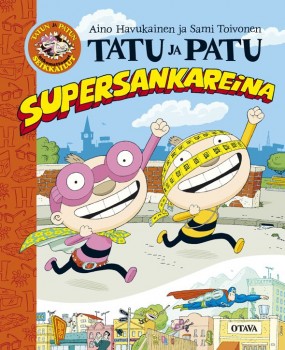Search results for ""sofi oksanen""
Encounters with a language
12 December 2014 | Articles, Non-fiction
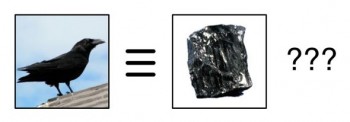
Mistranslation: illustration by Sminthopsis84/Wikimedia
Mother tongue: not Finnish. How do people become interested enough in the Finnish language in order to become translators? In the olden days some might have been greatly inspired by the music Sibelius (as were the eminent British translators of Finnish, David Barrett or Herbert Lomas, for example, back in the 1950s and 1960s). We asked contemporary translators to reminisce on how they in turn have become infatuated enough with Finnish to start studying and translating this small, somewhat eccentric northern language. Three translators into English, one into French, German and Latvian tell us why
Summer in the bookshop
11 August 2011 | In the news
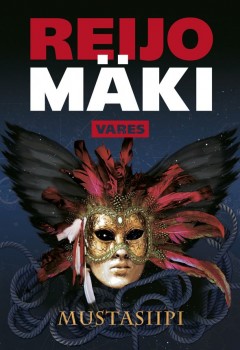 Not a surprise: in June and July Finns liked to read thrillers, both Finnish and foreign, as the Bookseller’s Association of Finland’s list of the best-selling Finnish fiction shows. Three out of top five on the Finnish fiction list were crime stories; number one was Mustasiipi (‘Blackwing‘, Otava), a thriller by Reijo Mäki.
Not a surprise: in June and July Finns liked to read thrillers, both Finnish and foreign, as the Bookseller’s Association of Finland’s list of the best-selling Finnish fiction shows. Three out of top five on the Finnish fiction list were crime stories; number one was Mustasiipi (‘Blackwing‘, Otava), a thriller by Reijo Mäki.
Tuomas Kyrö’s book of short prose about a grumpy old man resisting all sorts of contemporary fads, Mielensäpahoittaja (‘Taking offence’, WSOY), was stubborn enough to stick to number four (as in May).
Sofi Oksanen’s hugely successful novel about women and Estonian history, Puhdistus (2008), English version: Purge, keeps going strong: it is still number six on the list.
On the non-fiction list there were books, among others, on cooking, gardening and birds – in summer Finns like to grill barbecues while listening to birdsong and reading about diets, trekking and handicrafts…
Springtime in Paris: Nordic writers on a French visit
25 March 2011 | In the news
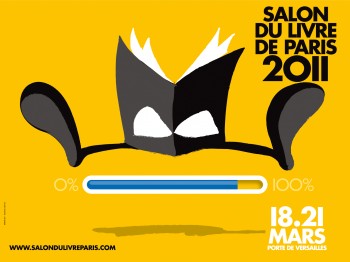 With an icy northerly wind at my back I took off from Helsinki and landed in Paris, where it was springtime and the cherry trees were in bloom. The aim of my trip was to join eleven translators from Finnish into all the main Nordic languages in examining the trickiest corners of the Finnish language and discussing the actual working conditions of literary translators, as well as the possibilities for Nordic literature to assert itself in the world.
With an icy northerly wind at my back I took off from Helsinki and landed in Paris, where it was springtime and the cherry trees were in bloom. The aim of my trip was to join eleven translators from Finnish into all the main Nordic languages in examining the trickiest corners of the Finnish language and discussing the actual working conditions of literary translators, as well as the possibilities for Nordic literature to assert itself in the world.
I was also going to meet with and listen to more than sixty writers from all the Nordic countries. Why did I have to go to Paris to do it? Because this was where Bokskogen, the Forest of Books, had grown.
At the Salon du Livre held in Paris from 18 to 21 March, at which the Nordic countries were the guests of honour, FILI (the Finnish Literature Exchange) was in charge of coordinating the Nordic pavilion, some 400 square metres in area.
The airy Scandinavian Forest of Books was filled with the murmur of Parisians in search of something Nordic to read and intent on having their newly purchased books signed by authors like Sofi Oksanen, Kari Hotakainen, Matti Rönkä, Monika Fagerholm, Katarina Gäddnäs, Seita Parkkola, Aira Savisaari, Johanna Sinisalo, Aino Havukainen and Sami Toivonen.
Before the official inauguration by France’s Minister of Culture Frédéric Mittérand the programmes had already been underway for four days. Just over a hundred professional people – publishers, translators and other cultural figures and institutions from across the Nordic countries – took part in various workshops to discuss common focal points and share experiences and best practices with each other and their French colleagues.
One of the major events was the Cultural Forum, a collaboration between FILI, the Nordic Council of Ministers and the Finnish presidency of the Nordic Council of Ministers. Its theme was the training of translators, and also the book industry in a global context.
In early March a dozen French journalists and booksellers toured Helsinki and Tammisaari (Ekenäs) in order to meet Finnish authors and interview them as a prelude to the big show. As a result Nordic literature also made its presence felt in France’s press and bookstores.
Translated by David McDuff
The books that sold in May
10 June 2011 | In the news
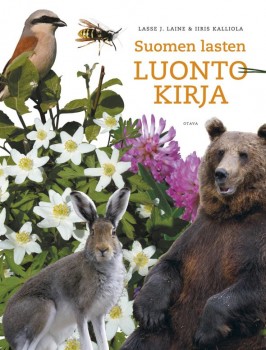 In May the Bookseller’s Association of Finland’s list of the best-selling Finnish fiction was still topped – as it was in March – by a collection of poems: Heli Laaksonen’s Peippo vei (‘The chaffinch took it’, Otava) is written in a local dialect spoken in south-western Finland. See our introduction to Laaksonen’s new poems.
In May the Bookseller’s Association of Finland’s list of the best-selling Finnish fiction was still topped – as it was in March – by a collection of poems: Heli Laaksonen’s Peippo vei (‘The chaffinch took it’, Otava) is written in a local dialect spoken in south-western Finland. See our introduction to Laaksonen’s new poems.
Pirjo Rissanen’s novel Äitienpäivä (‘Mother’s day’, Gummerus) was number two and Seppo Jokinen’s crime story, Ajomies (‘The driver’, Pulitzer/Crime Time) number three.
Tuomas Kyrö’s short prose about a grumpy old man resisting all sorts of contemporary fads, Mielensäpahoittaja (‘Taking offence’, WSOY), was number four.
Sofi Oksanen’s hugely successful novel about women and Estonian history, Puhdistus (WSOY, 2008) – English version: Purge –, still occupies number five on the list.
The most popular books for children and young people in May was the Finnish translation of a classic, Saint-Exupéry’s Le Petit Prince. A nature book for children, Suomen lasten luontokirja by Lasse J. Laine and Iiris Kalliola, was number two, and the cartoon kids Tatu and Patu occupied the third place (both published by Otava): Tatun ja Patun Suomi (‘Tatu and Patu’s Finland’), written and illustrated by Aino Havukainen and Sami Toivonen.
The translated fiction list was – as in March – topped by Maalattujen luolien maa (The Land of Painted Caves), by Jean M. Untinen-Auel, an American writer with Finnish roots. The novel is set in the late Paleolithic era.
On the non-fiction list there were books, in particular, on cooking, gardening, birds – and diets.
Funny stuff favoured
13 April 2011 | In the news
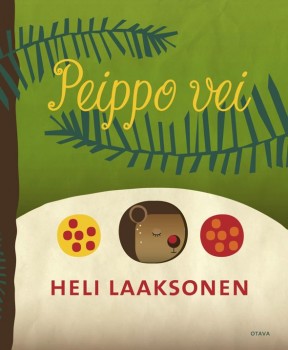 In March the Bookseller’s Association of Finland’s list of the best-selling Finnish fiction was topped – for a change – by a collection of poems. Like all her collections, Heli Laaksonen’s Peippo vei (‘The chaffinch took it’, Otava) is written in a local dialect spoken in south-western Finland.
In March the Bookseller’s Association of Finland’s list of the best-selling Finnish fiction was topped – for a change – by a collection of poems. Like all her collections, Heli Laaksonen’s Peippo vei (‘The chaffinch took it’, Otava) is written in a local dialect spoken in south-western Finland.
Perttti Jarla’s latest comics book, Fingerpori 4 (‘Fingerborg 4’, Arktinen Banaani) was number two – and, demonstrating the Finns’ love of cartoons and comics, another of his titles, Fingerpori book, Fingerpori – Kamppailuni (‘Fingerborg – My fight’) occupied fourth place, following Sofi Oksanen’s Puhdistus (Purge), published in 2008 and still number three on the list. More…
From the land of abundant reindeer…
17 March 2011 | This 'n' that

Rangifer tarandus, Finnish Lapland. Photo: Grand-duc (http://en.wikipedia.org/wiki/User:Grand-Duc)
Is Finland, a land of reindeer, ‘dense pine forests and deep snows’ also a ‘quiet literary landscape’?
Not exactly, as we at Books from Finland hope we are demonstrating. And over on the Bookslut website, Bonnie B. Lee comes to the same conclusion, after having mused about the reindeer (yes: in Helsinki you find tasty chunks of them in the freezer boxes of any foodstore) and reading three Finnish novels in English translation.
The novels Lee reviews are Purge by Sofi Oksanen (Puhdistus, 2008, translated by Lola Rogers, published last year), When I forgot by Elina Hirvonen (Että hän muistaisi saman, 2005, translated by Douglas Robinson, published in 2009) and The Year of the Hare by Arto Paasilinna (Jäniksen vuosi, 1975, first published in an English translation by Herbert Lomas in 1995, reprinted as a Penguin edition last year).
We have just entered the Year of the Rabbit, in recognition of which Paasilinna’s book (about a man who rejects his old life and goes roaming the wildernesses with a hare as his only companion) has appeared on the tables of large bookstores in the US. ‘The Year of the Hare is only the most Finnish, and perhaps most antically Zen-ish, of a shelf-load of books that tell us to find and live by our own ideas of contentment,’ said The Wall Street Journal.
The traumatic experiences of war and Finland’s deep forests are the common feature of these novels, Bonnie B. Lee finds. She also opines that ‘melancholy pervades the Finnish psyche’, and that ‘Finland vies with Hungary for highest suicide rate in Europe‘. Oh, but this latter is no longer true: number one on a World Health Organisation suicide rates list is Lithuania, followed by Hungary, Slovenia, Estonia and Latvia – Finland is number six.
Lee is clearly intrigued by her travels in contemporary Finnish literature. ‘The search for identity, a reckoning with a troubled past, and an outsider’s view looking in,’ she comments, ‘are all the stuff of great writing, and Finland is poised to continue to produce poignant and introspective literature that we can appreciate now that English translators have begun the work.’
Poignant and introspective or occasionally funny and fantastical, this is the work we try to offer an early glimpse of, in translation, at Books from Finland. Stay with us!
The books that sold
11 March 2011 | In the news

-Today we're off to the Middle Ages Fair. – Oh, right. - Welcome! I'm Knight Orgulf. – I'm a noblewoman. -Who are you? – The plague. *From Fingerpori by Pertti Jarla
Among the ten best-selling Finnish fiction books in 2010, according statistics compiled by the Booksellers’ Association of Finland, were three crime novels.
Number one on the list was the latest thriller by Ilkka Remes, Shokkiaalto (‘Shock wave‘, WSOY). It sold 72,600 copies. Second came a new family novel Totta (‘True’, Otava) by Riikka Pulkkinen, 59,100 copies.
Number three was a new thriller by Reijo Mäki (Kolmijalkainen mies, ‘The three-legged man’, Otava), and a new police novel by Matti Yrjänä Joensuu, Harjunpää ja rautahuone (‘Harjunpää and the iron room’, Otava), was number six.
The Finlandia Fiction Prize winner 2010, Nenäpäivä (‘Nose day’, Teos) by Mikko Rimminen, sold almost 54,000 copies and was fourth on the list. Sofi Oksanen’s record-breaking, prize-winning Puhdistus (Purge, WSOY; first published in 2008) was still in fifth place, with 52,000 copies sold.
Among translated fiction books were, as usual, names like Patricia Cornwell, Dan Brown and Liza Marklund.
In non-fiction, the weather, fickle and fierce, seems to be a subject of endless interest to Finns; the list was topped by Sääpäiväkirja 2011 (‘Weather book 2011’, Otava), with a whopping 140,000 copies. Number two was the Guinness World Records 2011, but with just 43,000 copies. Books on wine, cookery and garden were popular. A book on Finnish history after the civil war, Vihan ja rakkauden liekit (‘Flames of hate and love’, Otava) by Sirpa Kähkönen, made it to number 8 on the list.
The Finnish children’s books best-sellers’ list was topped by the latest picture book by Mauri Kunnas, Hurja-Harri ja pullon henki (‘Wild Harry and the genie’, Otava), selling almost 66,000 copies. As usual, Walt Disney ruled the roost in the translated fiction list.
The Finnish comics list was dominated by Pertti Jarla (his Fingerpori series books sold more than 70,000 copies, almost as much as Remes’ Shokkiaalto!) and Juba Tuomola (Viivi and Wagner series; both mostly published by Arktinen Banaani): between them, they grabbed 14 places out of 20!
What Finland read in November
17 December 2010 | In the news
In November the latest thriller by Ilkka Remes, Shokkiaalto (‘Shock wave’, WSOY) topped the Booksellers’ Association of Finland’s list of the best-selling Finnish fiction. Sofi Oksanen’s prize-winning, much-translated 2008 novel Puhdistus (Purge, WSOY), has not left the best-selling list since it was awarded the Finlandia Prize for Fiction this autumn and was now number two.
Riikka Pulkkinen’s novel Totta (‘True’, Otava) was number three, and Tuomas Kyrö’s colllection of episodes from a grumpy old man’s life as told by himself, Mielensäpahoittaja (‘Taking offense’, WSOY), from last spring, occupied fourth place.
A new novel, Harjunpää ja rautahuone (‘Harjunpää and the iron room’, Otava), by the grand old man of Finnish crime, ex-policeman Matti Yrjänä Joensuu, was number five.
The most popular children’s book was a new picture book about two inventive and curious brothers, Tatu ja Patu supersankareina (‘Tatu and Patu as superheroes’, Otava) by Aino Havukainen and Sami Toivonen.
On the translated fiction list were books by, among others, Ildefonso Falcones, Jo Nesbø, Lee Child, Stephen King, Paulo Coelho and Paul Auster.
The non-fiction list included the traditional annual encyclopaedia Mitä missä milloin (‘What, where, when’, Otava, second place) as well as a political skit entitled Kuka mitä häh (‘Who what eh’, Otava) by Pekka Ervasti and Timo Haapala – the latter sold better, coming in at number one. In November the latest thriller by Ilkka Remes, Shokkiaalto (‘Shock wave’, WSOY) topped the Booksellers’ Association of Finland’s list of the best-selling Finnish fiction.
Best-selling books in September
15 October 2010 | In the news
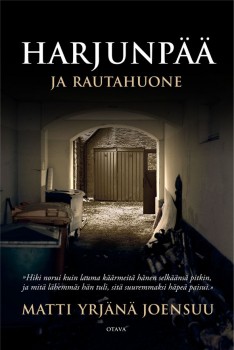 In September, Finns read crime novels. Matti Yrjänä Joensuu’s latest book featuring his police protagonist Timo Harjunpää, Harjunpää ja rautahuone (‘Harjunpää and the iron room’, Otava), topped the Booksellers’ Association of Finland’s best-seller list.
In September, Finns read crime novels. Matti Yrjänä Joensuu’s latest book featuring his police protagonist Timo Harjunpää, Harjunpää ja rautahuone (‘Harjunpää and the iron room’, Otava), topped the Booksellers’ Association of Finland’s best-seller list.
Joensuu’s Harjunpää ja pahan pappi was published in English in 2006 and reissued in 2008 under the title Priest of Evil. A film adaptation will be released in Finland in late October, directed by Olli Saarela and starring Peter Franzén in the title role.
Number two was the latest thriller from the pseudonymous Ilkka Remes, Shokkiaalto (‘Shock wave’, WSOY), and number three was Leena Lehtolainen’s Minne tytöt kadonneet (‘Where have all the young girls gone’, Tammi).
Sofi Oksanen’s record-breaking seller and critical success Puhdistus (WSOY; English edition: Purge, Atlantic Books) held strong in fourth place.
In translated fiction, Paul Auster, Diana Gabaldon ja Paulo Coelho headed the list.
The non-fiction list was topped by a study of sociability and social skills by Liisa Keltikangas-Järvinen (Sosiaalisuus ja sosiaaliset taidot, WSOY). Readers seem to be interested in survival, as the number two book was in a similar vein, Lilli Loiri-Seppä’s Selviämistarinoita (‘Stories of coping’ – also translatable as ‘Stories about getting sober’, Gummerus), about how to stop drinking.
Walt Disney was missing again from the top of the children’s list, the number one and number two spots being taken by Finnish picture books, Tatu ja Patu supersankareina (‘Tatu and Patu as superheroes’, Otava) by Aino Havukainen and Sami Toivonen, and Hurja-Harri ja pullon henki (‘Scary Harry and the genie in the bottle’, Otava) by the veteran graphic artist and children’s book author Mauri Kunnas. A new installment of the Ella storybook series by Timo Parvela, Ella ja Yön ritarit (‘Ella and the Knights of the Night’, Tammi) held the number three spot. In September, Finns read crime novels. Matti Yrjänä Joensuu’s latest book featuring his police protagonist Timo Harjunpää, Harjunpää ja rautahuone (‘Harjunpää and the iron room’, Otava), topped the Booksellers’ Association of Finland’s best-seller list.
What was Finland reading this summer?
2 September 2010 | In the news
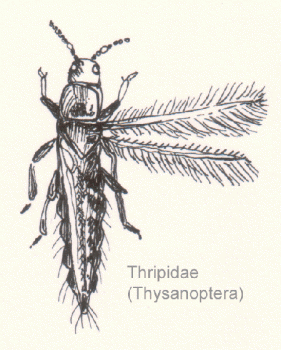 Novels, thrillers and comics were on the June–July list of best-selling books according to the Booksellers’ Association of Finland.
Novels, thrillers and comics were on the June–July list of best-selling books according to the Booksellers’ Association of Finland.
And, as the popular poet, MP, novelist and television celebrity Tommy Tabermann (born 1947) died in June, his collected poems, Runot 1970–2010 became number one of the list.
Sofi Oksanen’s highly popular novel Puhdistus (Purge) has kept itself on the list for a long time, was now at number three. Tuomas Kyrö’s humorous novel about a man in his 80s, Mielensäpahoittaja (‘Taking offense’) was at number seven, Pertti Jarla’s Fingerpori 3 at number eight and Leena Lander’s new novel Liekin lapset (‘Children of the flames’) at number ten.
The top ten list of translated fiction included works by Jo Nesbø, Charlaine Harris, John Irving, Donna Leon and Dagsson Hugleikur.
During the summer there’s clearly enough time for nature observations: The Cloudspotter’s Guide by Gavin Pretor-Pinney, a work presenting birds’ sounds and a book on bugs and creepy crawlies were among the ten best-selling non-fiction books.
Translation prize
27 August 2010 | In the news
This year the Finnish Government Prize for Translation of Finnish Literature – worth € 10,000 – was awarded to the poet, translator, linguist and literary critic Rami Saari who translates into Hebrew.
Saari (born 1963) has studied and taught Hebrew, Semitic languages and Finno-Ugric Language Studies at universities in Helsinki, Budapest and Jerusalem. He has been the editor of the Israeli section of the international poetry website poetryinternational.org since 2002 and has edited a book series for Ha-kibbutz hameuchad which publishes predominantly Nordic and Baltic literature.
Saari, who has also published seven collections of his own poetry, now lives in Athens. He has also translated Albanian, Spanish, Catalan, Greek, Portuguese, Hungarian and Estonian fiction.
Among the Finnish writers Saari has translated are Daniel Katz, Eeva Kilpi, Eino Leino, Veijo Meri, Timo K. Mukka, Sofi Oksanen, Arto Paasilinna, Raija Siekkinen, Eeva Tikka, Sirkka Turkka and Mika Waltari.
Rami Saari received his award in Helsinki on 25 August from the minister of culture and sports, Stefan Wallin. The prize has been awarded by the Ministry of Education and Culture since 1975 on the basis of a recommendation from FILI – Finnish Literature Exchange.
Postcards from the lakeside
8 August 2010 | This 'n' that

A tower with a view: Olavinlinna (St Olaf's castle). Photo: Lola Rogers
Translator Lola Rogers (of, for example, Sofi Oksanen’s best-selling novel Purge), from Seattle, spent a few weeks in Finland, and went on a cruise on Lake Saimaa.
Olavinlinna (St Olaf’s castle), and the opera, in the city of Savonlinna, was one of her stops; take a look at her blog – you’ll perhaps recognise the the inventive 16th-century wall privies on the towers we wrote about a while ago.
There are quite a few photos from Helsinki, too – from this hot, hot (too hot?) summer.
What Finland read in April
14 May 2010 | In the news
In April Sofi Oksanen’s best-selling novel Puhdistus, Purge (winner of the Finlandia Prize for Fiction in 2008, WSOY, and now available in English translation) was top of the best-selling Finnish fiction list again. Quite an achievement.
Finns seem to be besotted with Pertti Jarla’s comic books: three of them, set in the weird city of Fingerpori (‘Fingerborg’, Arktinen Banaani), were on the list.
The final volume of artist and writer Hannu Väisänen’s fictionalised autobiography, Kuperat ja koverat (‘Convex and concave’, Otava, 2009), was number five on the list. Number three was a newcomer, Tumman veden päällä (‘On dark water’, Tammi), also an autobiographical novel about childhood, by the the actor Peter Franzén.
Names appearing high on the foreign fiction list in April included Child Lee, Dan Brown, Falcones Ildefonso, Liza Marklund, Pamuk Orhan and W.G. Sebald.
Comics turns
16 April 2010 | In the news
Comics make frequent appearances on the lists of best-selling Finnish books: on the ‘What Finland reads’ list in March, Pertti Jarla’s new comic strip book, Fingerpori 3, about the eponymous, weird city of Fingerpori (‘Fingerborg’), is number one. His two other Fingerpori books are number eight and ten on the list. The zany comedy in them is verbal, based on puns – and therefore not easily exportable.
The new and final volume of Hannu Väisänen’s autobiographical, fictional trilogy about the young wannabe artist Antero, Kuperat ja koverat (‘Convex and concave’) made its way into the top ten right away, making its appearance at number two.
The Finlandia Prize -winning novel, Gå inte ensam ut i natten (‘Don’t go out into the night alone’, translated into Finnish as Älä käy yöhön yksin) by Kjell Westö, is number three – the novel was published in September 2009, and this reappearance is partly explained by special campaigns in the bookstores, says Westö’s publisher, Otava.
Sofi Oksanen’s prize-winning novel Puhdistus (Purge, now published in English) from 2008, is back on the list again, now at number four. Kari Hotakainen’s latest novel, Ihmisen osa (‘Human lot’, 2009, to appear in English in 2012) is at number six.


